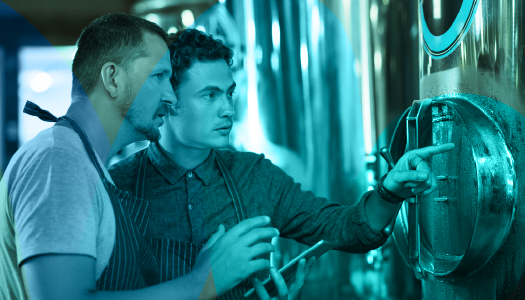How the Global Plastics Industry is Evolving Amid New Challenges and Opportunities
According to recent research, the global plastic industry market is expected to reach $824 billion USD by 2030. Yet despite that strong projected growth, it’s not all smooth sailing. Consumer demands are evolving, sustainability is a pressing priority, and manufacturers are working to adapt to smart automation to reduce waste and emissions.
Still, the plastics industry continues to thrive, driven by growth in key sectors like food and beverage, construction, electronics, and automotive. This article will dive deeper into some of the recent trends that have shaped the plastics industry framework in recent years – and will likely continue to do so for years to come.
Versatility of plastics across industries
One reason plastics remain indispensable is their versatility. Industries from automotive to food packaging rely heavily on different types of plastics.
- Polyethylene (HDPE and LDPE): Lightweight and durable, polyethylene is a favorite in the automotive sector, helping manufacturers create fuel-efficient vehicles. It’s also used in construction materials like shatterproof windows and electronics for wires and connectors.
- PET and rPET: In food and beverage packaging, polyethylene terephthalate (PET) and its recycled counterpart, rPET shine. These plastics improve product shelf life, reduce shipping costs thanks to their light weight, and meet growing consumer demand for eco-friendly options.
- Biodegradable plastics: Made from renewable sources like plants, biodegradable plastics break down easily into water and carbon dioxide, producing fewer emissions during production.
- High-performance plastics: These engineered materials offer heat resistance, corrosion resistance, and lightweight durability, making them perfect for harsh environments in industries like aerospace and automotive.
The environmental impact of plastic production
Global plastic production has skyrocketed, nearly doubling since 2000. Unfortunately, only 9% of plastic waste is recycled, with 20 million metric tons leaking into the environment annually. Greenhouse gas emissions from plastic production are a significant concern, and many of the chemicals used in production are harmful to human health.
Governments and organizations are responding. Over 100 countries are collaborating on an International Plastics Treaty to set sustainable production limits, with more details expected in later in 2025. In the meantime, manufacturers are investing in technologies that upcycle plastics, using the waste to create something more valuable like in the fashion & clothing industry and/or new plastic products as a turnkey project.
Leveraging technology in plastics manufacturing
The plastics industry, like others, is embracing Industry 4.0 technologies to improve efficiency and sustainability. From robotics and automation to IoT monitoring and machine learning, advanced tools can offer significant benefits:
For example, IoT sensors and CMMS systems help manufacturers avoid unexpected equipment failures, reducing downtime and maintenance costs. And automation can speed up processes like injection molding and blow molding, creating parts in-house and cutting costs. Technologies like SCADA systems are also impactful, as they allow manufacturers to monitor and reduce energy consumption, aligning with environmental goals.
However, these innovations come with challenges, such as employee skill gaps and implementation costs. Success depends on detailed planning and involving stakeholders from across the organization.
A path toward global sustainability
The global demand for plastics continues to grow, especially in regions like Asia, Africa, and Latin America. However, supply chain disruptions—from the COVID-19 pandemic to geopolitical tensions—have made raw materials like petrochemicals more expensive and harder to source.
Balancing cost and sustainability is the biggest challenge. Sustainable production processes often require expensive technologies, and manufacturers are under pressure to maintain price affordability while meeting environmental standards.
The fact is, the future of plastics manufacturing lies in innovation and collaboration. Organizations like #BreakFreeFromPlastic, with over 13,000 members, are raising awareness and driving change. Upcycling—turning plastic waste into valuable products like clothing—represents an exciting opportunity to combat pollution.
For manufacturers, digital tools like CMMS and IoT systems provide a way to improve productivity and sustainability simultaneously. By investing in these technologies, companies can extend equipment lifespans, reduce emissions, and ensure compliance with evolving regulations.
Conclusion
Despite challenges, the plastics industry is poised for growth, driven by rising demand for consumer goods and new opportunities in sustainability and automation. Manufacturers who embrace innovative technologies and prioritize environmental responsibility will lead the way.
But don't just take my word for it. Want to see a real-world example of how advanced solutions can transform manufacturing? Check out how Cornerstone Building Brands saved $400,000 in maintenance costs by using Brightly's multi-site solution.
Or if you want to learn how other manufacturing industries are faring, read up on Trends and Challenges Facing the Paper & Packing Industries.




